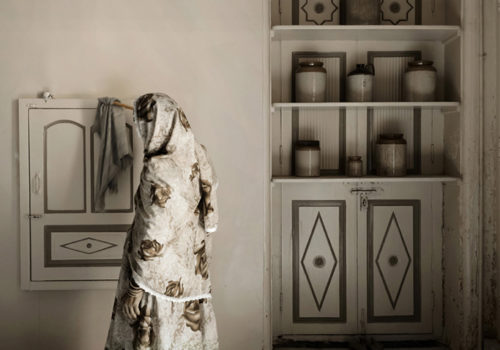It’s one photo festival after another here, and none of them look alike in the city of Goa, which has become over the past few months one of the most interesting places for photography in India. Following the Sensorium Fest in December and January and the Goa Photo Festival a few weeks ago, Goa Photo will open on March 7th in the streets of Panaji.
Panaji, with its beaches and resorts, its lush plantlife, its church of the Immaculate Conception, its narrow streets running along brightly colored buildings and sculpted verandas… It’s a little piece of Portugal on the shores of the Arabian Sea, now hosting the first edition of Goa Photo, organized by Frank Kalero and Lola Mac Dougall-Padgaonkar.
“Goa Photo features the work of 18 Indian and international photographers in Panaji, exhibited in the streets, parks and public spaces of the city, bringing the work to where the viewers live,” says Frank Kalero, the curator and artistic director of Photoquai 2015. He is also the director of the magazine Punctum, which covers Asian photography, and the founder of the wonderful Spanish magazine OjodePez. “Our goal with Goa Photo was to introduce the local citizens, and indian and foreign tourists, to photographers with singular visions both in their subjects and their approach to them,” he says.
After the hot afternoon hours, it’s nice to walk through the streets of the small town, where we find ourselves face-to-face with portraits by Portuguese photographer Eurico Lino do Vale hanging from balconies or, further on, at nightfall, with Sheetal Mattar’s portraits of Indian Navy offices, exhibited in lightboxes in the middle of a park.
Let us pause before Sebastian Cortés’s photographs taken from his series Sidhpur: Time Present, Time Past. We enter the homes of the Bohra, a Gujarati community whose houses are a reflection of India as a whole: a mixture of Hinduism, Islam, Europe, Persia and the Middle East. These timeless salons, rooms and staircases make one think of a movie set filled with people. Soumya Sankar Bose introduces us to another community, the Jatra. Created in the 16th century, these popular Bengali theatre troupes told mythological stories and legendary feats of arms in their traveling shows. Starting in the mid-20th century, with the rise of cinema, this form of theatre died out. Bose set out in search of actors who still lead this lifestyle in Bengal and Bangladesh, who agreed to resume their role for a portrait. The density of the contrasts, the poses of the actors and their costumes creates a powerful series that pays tribute to these misunderstood men. Jatra is one of the highlights of the festival.
FESTIVAL
Goa Photo Panaji
Goa, India
From February 25th to March 7th 2015
















